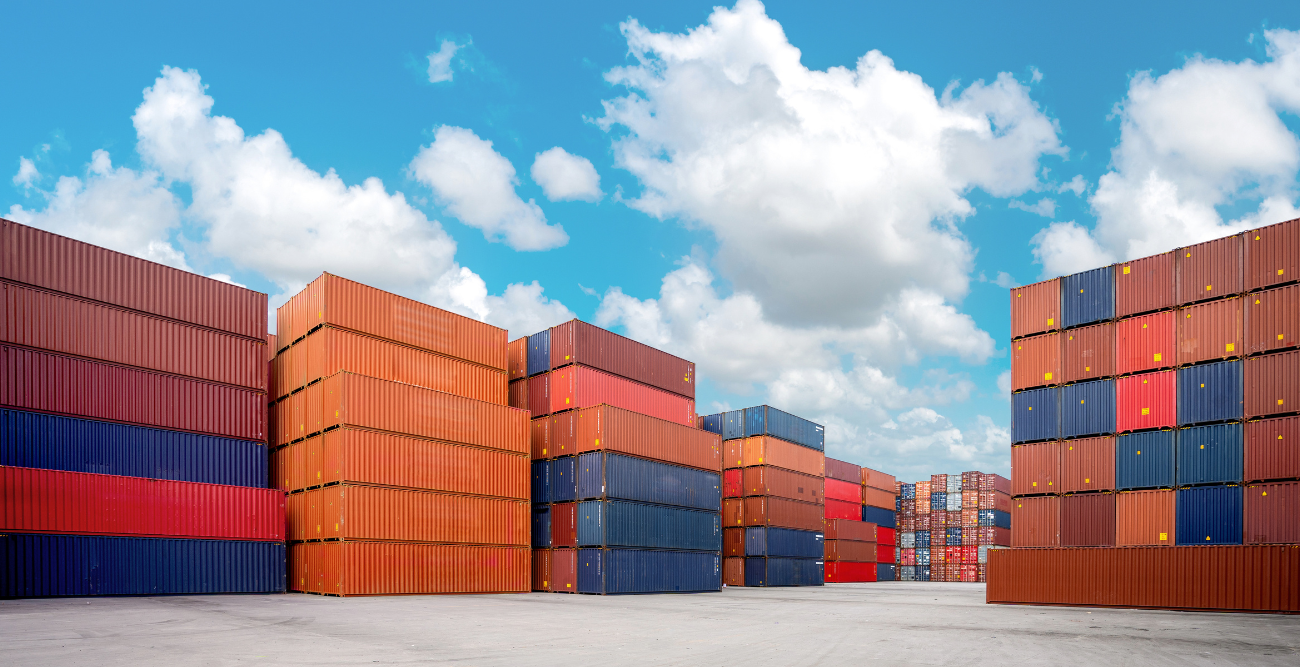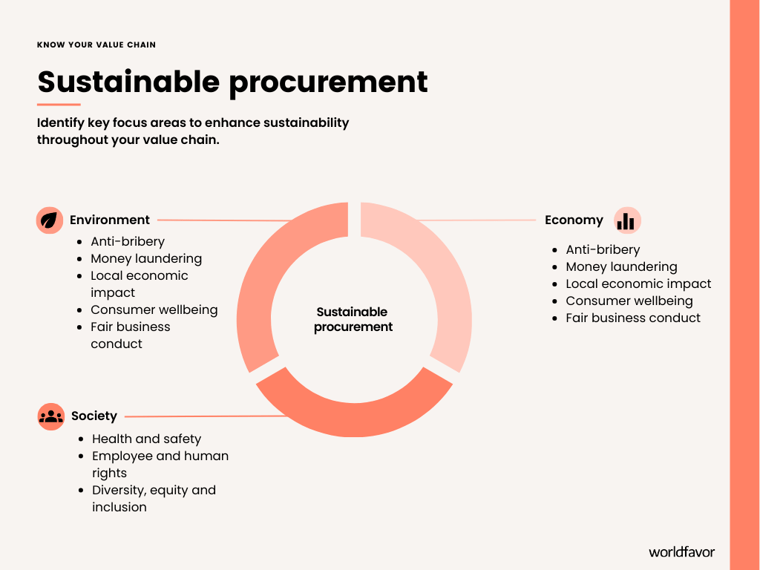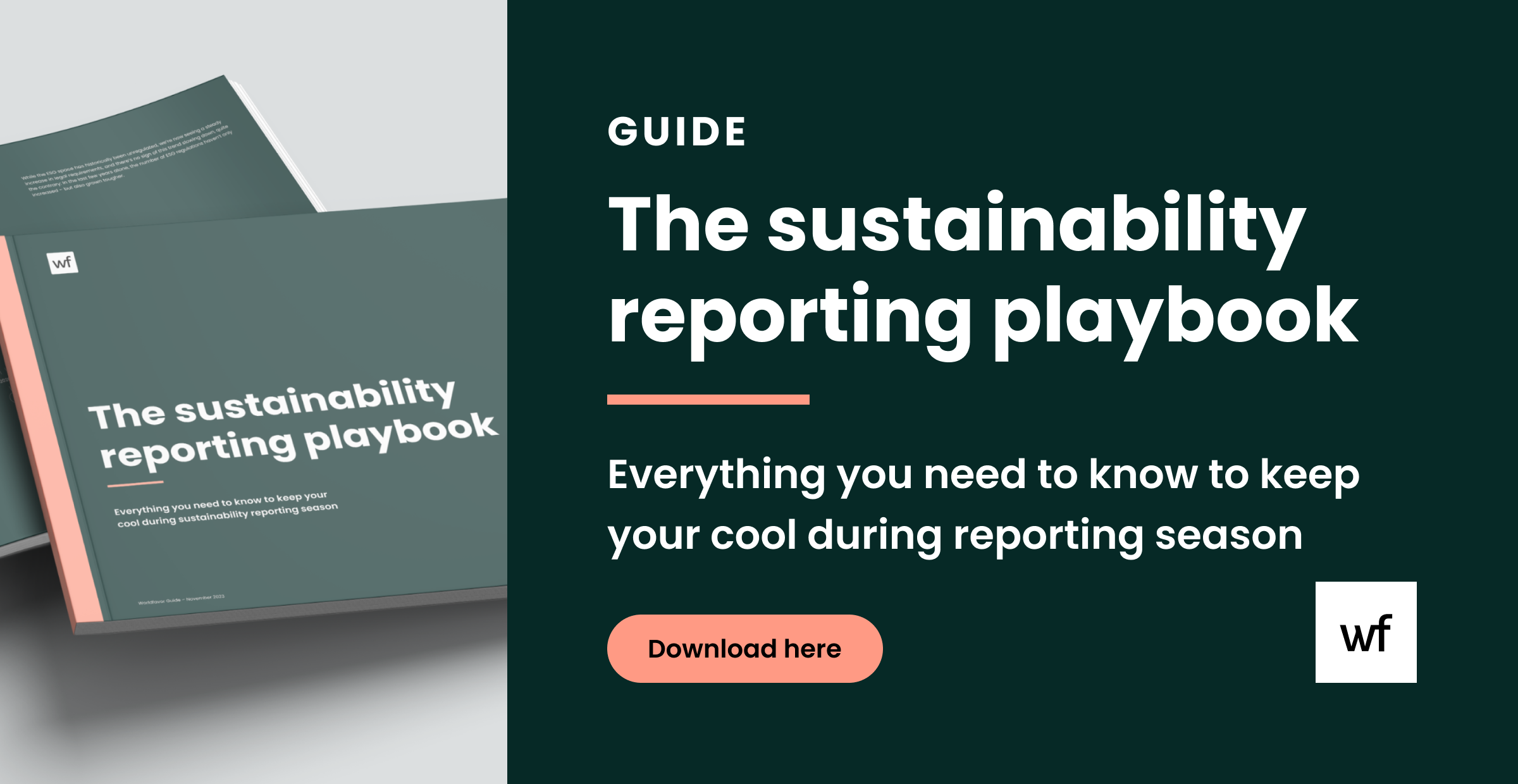What is sustainable procurement?
Sustainable procurement is an important part of reducing a company’s environmental and social impacts on its supply chain. In this blog, we’ll dive into what sustainable procurement is, explore its benefits, and look into key steps on how to get started.

Published: December 2023
The most impactful and transformative move a company can make towards becoming truly sustainable isn't necessarily through green initiatives or marketing campaigns: it's in the decisions they make every day, particularly in their procurement decisions.
Did you know that for most products, about 80-90% of their greenhouse gas emissions fall into the Scope 3 category? These are indirect emissions born across a company’s value chain, and each part of a product's journey – extraction, processing, transport, packaging, consumption, and disposal – produces emissions that companies are responsible for. Of these emissions, two-thirds are usually from the upstream of their supply chains, caused by their suppliers and business partners.
More companies are starting to realize that if they truly want to be sustainable, they need to go beyond their internal operations and start looking into how they procure goods and services by collaborating straight with the source - their suppliers.
This has really reshaped how companies approach sustainability - putting procurement at the forefront of their sustainable actions.
In this blog, we’ll unfold what sustainable procurement truly is, explore its benefits, and provide some tips for those looking to begin their sustainable procurement journey.
What is sustainable procurement?
Sustainable procurement, or green procurement, considers environmental, governance, and social (ESG) factors in an organization’s purchasing decisions and processes. It prioritizes cost-effectiveness across the entire life cycle of a product or service – from raw material to disposal – while emphasizing resource conservation and responsible management.
By implementing sustainable procurement, a company can understand and manage the environmental impact on its supply chain in real time.
In other words, it goes beyond standard procurement by addressing economic development, emissions, climate change, and broader environmental and social impacts, making it vital for businesses to integrate corporate responsibility.
What are the benefits of sustainable procurement?
Adopting sustainable procurement practices brings companies many benefits, making it an increasingly important practice in today's business landscape. By integrating social, economic, and environmental factors into the procurement process, companies can achieve various advantages, including:
- Revenue growth: Excelling in ESG practices, which often include sustainable procurement practices, tend to boost companies' financial success. Top ESG performers have shown to outpace their counterparts by 10-20% in both growth and valuation, illustrating a clear link between sustainability efforts, including procurement, and overall financial success. Plus, studies have found that implementing sustainable procurement practices also enhances the company’s reputation, which will attract more customers and in turn drives revenue growth.
- Cost savings: Sustainable procurement drives operational efficiency and waste reduction, leading to significant cost savings. Companies prioritizing environmental and social responsibility can achieve practical cost reductions ranging from 5-10%, highlighting measurable financial advantages.
- Regulatory compliance: Prioritizing sustainable procurement keeps companies ahead of evolving ESG-related regulations, like the Corporate Sustainability Due Diligence Directive (CSDDD) and the Corporate Sustainability Reporting Directive (CSRD). This not only mitigates risks associated with changing legal requirements, but also ensures long-term resilience.
- Supply chain transparency: Sustainable procurement goes beyond internal operations, addressing the entire value chain. It identifies and mitigates indirect emissions, covering everything from goods and services to employee travel and product end-of-life treatment. Given that the majority of the greenhouse gas emissions of a product or service stem from indirect sources, transparency is crucial, especially with Tier-N suppliers where the risk of unnoticed environmental or labor issues goes higher.
- Risk management: Sustainable procurement processes help companies take charge in foreseeing and handling risks. This involves staying on top of rule changes, meeting stakeholders' expectations, lessening the risk of transitions, and building lasting resilience in a constantly changing business environment.
A Stanford Graduate School of Business study found that companies prioritizing sustainability values in their supply chains, such as labor rights and environmental protections, handled the disruptions of the COVID-19 pandemic better that those solely focused on profit margins. “Sustainability and sustainable procurement practices actually help companies improve their resilience and reduce risks,” Barchi Gillai, co-author of the study and associate director of the Value Chain Innovation Initiative at Stanford Graduate School of Business, points out. - Meeting environmental targets: Procurement is a key player in reaching global environmental goals. By teaming up with suppliers, companies not only cut down their own environmental negative impact, but also their suppliers. Sustainable procurement enables companies to measure and tackle things like greenhouse gas emissions, water usage, energy efficiency, pollution, waste, sustainable farming, and deforestation.
How do you implement a sustainable procurement process?
Here’s some hands-on tips for companies looking to implement an effective, more sustainable procurement process.
Make a current state analysis
- Analyze and quantify the organization’s current ESG impact.
- Conduct stakeholder and solution mapping. Make sure to involve those responsible for the product or service (business and category heads).
Set ESG goals
- Identify risk areas and improvement opportunities.
- Establish clear ESG goals aligned with the company's agenda. There are many standards and frameworks guiding companies on integrating sustainability within their procurement decisions/processes. For instance, the ISO 20400:2017, which is the first, and until this day, the most used standard.
- Define expectations for due diligence, compliance, and development targets per product/service category.
Implement a responsible sourcing policy, strategy, and action plan
- Communicate and implement a responsible sourcing policy, using frameworks like the International Chamber of Commerce (ICC) Guide to Responsible Sourcing.
- Evaluate suppliers based on ESG standards and map the product lifecycle.
- Scale up and integrate sustainable initiatives and practices into your procurement management.
Establish a system for supplier engagement
- Evaluating suppliers and prospects won't work without open communication and collaboration. That’s why it’s important to implement real-time communication opportunities and ensure streamlined communication across all parties, not just internally.
- Establish maintenance protocols for the management team to be able to quickly fix any communication or collaboration issues.
- Create issue notification protocols and have clear steps to let the right people know if something goes wrong.
- Maintain regular communication with partners for evaluation and process improvement.
Follow and report your process
- Track performance against targets.
- Communicate progress transparently to manage stakeholder expectations.
Sustainable procurement: identify key focus areas to enhance sustainability throughout your value chain.
Simplify ESG reporting and supplier collaboration with Worldfavor
Worldfavor offers a streamlined platform for seamless supplier collaboration and data management, empowering you to modernize data handling and enhance your understanding of your supply chain. Accessible and free for all your suppliers, it's a win-win for both them and your business. Join the platform now.
What you get with Worldfavor:
- Access supplier ESG baseline and performance assessment
- Identify and mitigate risks effectively
- Conduct comprehensive supply chain due diligence
- Align with CSDDD and CSRD directives
- Track local regulations, e.g. LkSG and Åpenhetsloven
- Track voluntary standards, e.g. SBTi, TCFD, and SDGs
Want to know more about how we can help your company reach your sustainability goals? Book a free demo call today!
Related blog posts you might like:






%20as%20the%20deadline%20approaches.%20Learn%20about%20compliance%20requirements%2c%20potential%20delays%2c%20and%20key%20updates..png)

